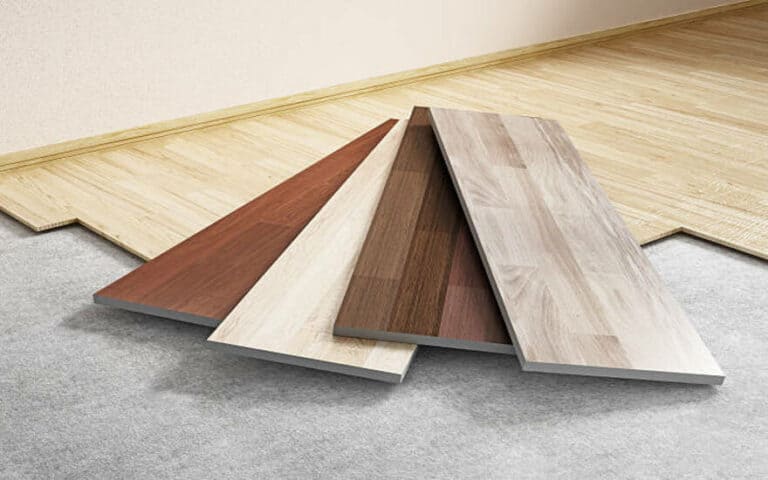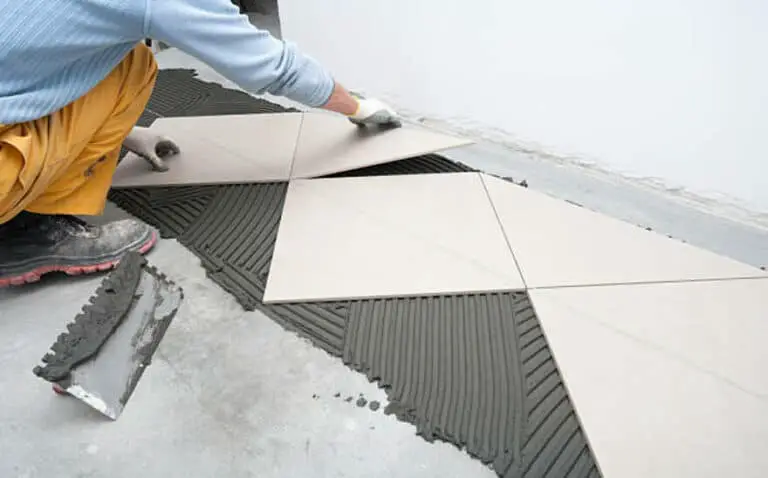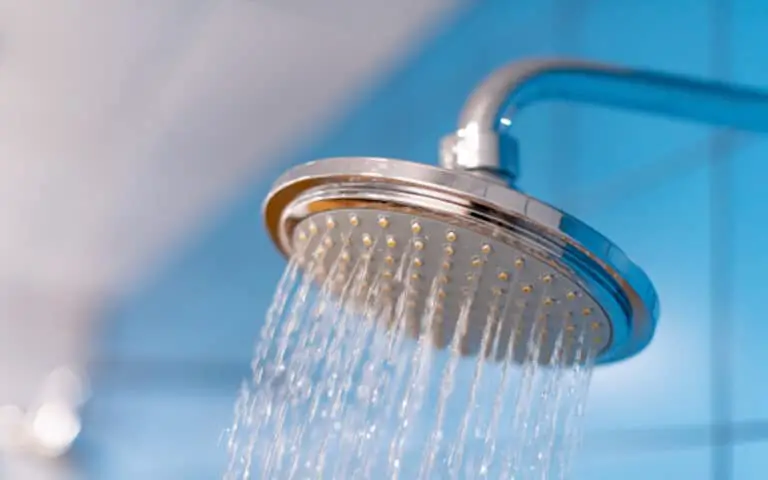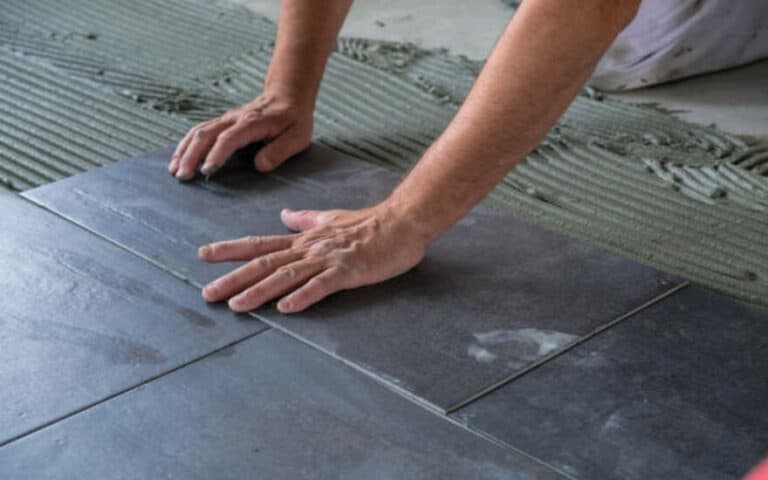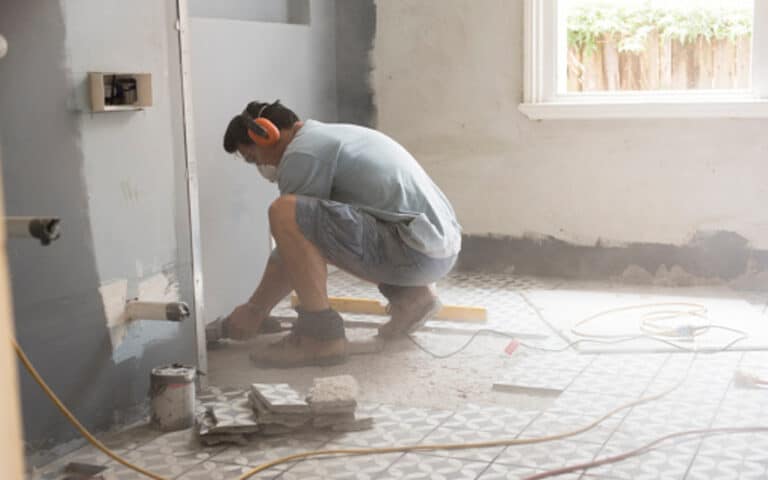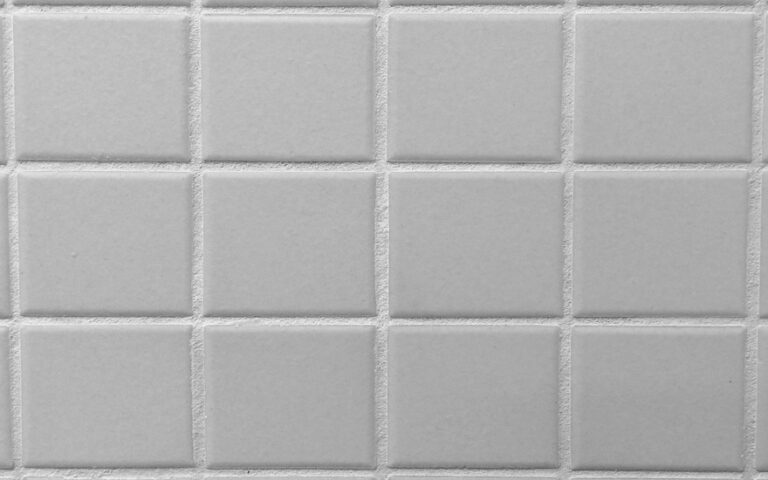Yes.
If so, don’t worry—I’ve got the answers! In this blog post, I’ll answer all your questions about whether or not laminate flooring can get mold and how to prevent it.
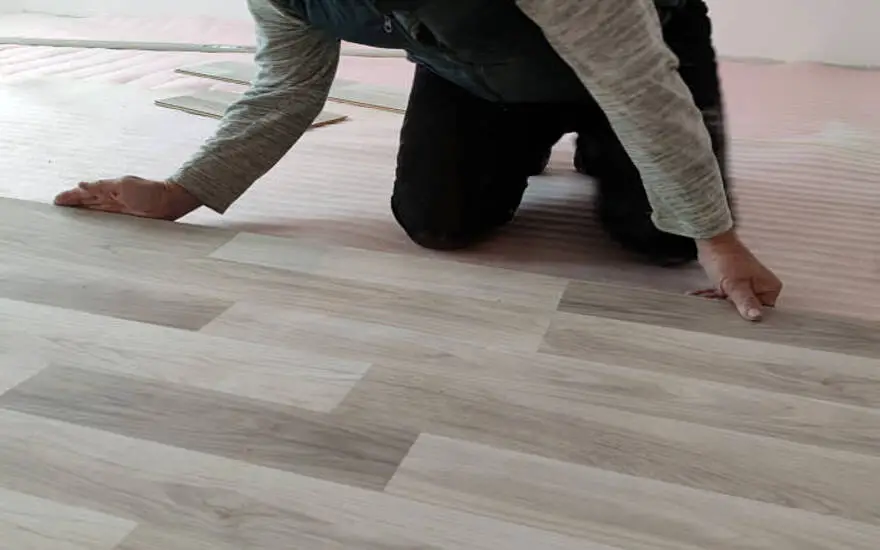
What Causes Mold Under Laminate Flooring?
Mold under laminate flooring is caused by dampness or excessive moisture buildup. This can be due to several factors, including high levels of indoor condensation, a broken water pipe, or a slow water leak.
It’s essential to identify the source of the moisture and fix it before attempting to remove the mold. In addition, it’s also necessary to take preventative measures, such as using a moisture barrier and cleaning up spills immediately to reduce the risk of mold growth on your laminate flooring.
Why Does Mold Grow on Laminate Flooring?
Mold can grow on laminate flooring due to several factors. Humid weather, high temperatures, and concrete that is left unsealed all create the perfect environment for mold spores to thrive. In addition, dirty and damp floors can provide a breeding ground for mold.
Finally, a simple handful of mold spores can quickly turn into a colony in a damp environment. Thus, keeping our laminate floors clean and dry is essential to prevent mold growth.
What Are the Signs of Mold Growth on Laminate Flooring?
One of the critical signs of mold growth on laminate flooring is discoloration. You may notice green, yellow, or black patches in some areas. Additionally, you may detect a musty odor, usually indicative of mold growth.
In extreme cases, you may even see surface irregularities or warping due to moisture damage. Pay special attention to areas with water buildup or prolonged exposure to moisture – these are the most likely spots for mold growth.
If you notice any of these signs, you must immediately remove the mold and prevent further damage to your laminate flooring.
#1 Discoloration
The discoloration is one of the most obvious signs when detecting mold on laminate flooring. If you notice that the laminate flooring has become warped, cracked, or buckled or has a musty odor, this is also a strong indicator that mold may be present.
Noticing any discoloration on your flooring is also a good sign that you may have a mold problem. If you’re unsure what to look for, it’s best to contact a professional to inspect your flooring and determine the best way to treat it.
Act quickly if you notice any discoloration on your laminate flooring, as this can indicate an underlying issue with moisture or humidity levels in your home.
#2 Musty odor
A musty odor is one of the most common signs of mold growth on laminate flooring. This can be a giveaway that something is wrong and that you must investigate further. Acting quickly is essential if you notice a strange smell in your home.
Mold spores can spread quickly through the air and cause more damage to your flooring and your health. If you notice a musty odor coming from your laminate flooring, looking closely for other signs of mold growth, such as discoloration, buckling, or water stains is essential.
If you find any of these issues, it’s essential to take the necessary steps to remove the mold quickly before it spreads and causes more damage.
#3 Surface irregularities or warping
Another sign of potential mold growth on laminate flooring is surface irregularities or warping. If you notice that the laminate flooring is buckling, warping, or creaking when walked on, these could be signs that mold is present.
This is because mold needs moisture to grow, and the constant water from spills or leaks can make the flooring swell and warp over time. If you notice any of these signs, it’s best to take a closer look to see if you can spot any discoloration or musty odors that may indicate the presence of mold.
Taking measures to quickly clean up any spills or leaks can help prevent this type of moisture buildup and reduce the risk of mold growth on your laminate flooring.
How Long Does It Take for Mold to Grow on Laminate Flooring?
Mold can spread quickly on laminate flooring, especially in moist and humid environments. It takes only 24 to 48 hours for mold to germinate and grow on the surface of laminate flooring.
The mold can spread rapidly and cause lasting damage without prompt attention and proper care. To prevent mold growth, cleaning up spills immediately and using a moisture barrier to protect your laminate flooring from water damage is essential.
If you notice signs of mold, such as discoloration, musty odors, surface irregularities, or warping, quickly remove them. With the proper care and attention, laminate flooring can provide years of worry-free service.
What Can I Do to Prevent Mold on Laminate Flooring?
To prevent mold from growing on your laminate flooring, you should keep it dry and clean. Clean up spills immediately to avoid moisture buildup. Try using a damp mop or vacuum with a HEPA filter to keep your floors from dirt and dust.
You can apply a mold-killing spray to the affected area if you notice discoloration or musty odors. Additionally, you can use a moisture barrier between the flooring and any underlying surfaces to protect against water damage.
All these steps will help ensure that your laminate flooring remains mold-free and in good condition for years to come.
How Can I Remove Mold from Laminate Flooring?
Removing mold from laminate flooring can be done with a combination of cleaning solutions. Mix equal parts of rubbing alcohol, water, and vinegar in a bucket.
Mop the solution onto the floor and let it sit for 10-15 minutes to allow the antibacterial qualities of vinegar and rubbing alcohol to work. If your kit comes back with a harmless, common mold, you can clean it up with bleach and water.
After cleaning, allow the area to air dry completely. It’s important to remember that if the mold is coming from an underlying issue, like excessive moisture or water damage, you’ll need to address those issues to prevent future mold growth.
These proactive steps can help you keep your laminate floors looking great for years.
What Are the Common Causes of Water Damage to Laminate Flooring?
Water damage is a significant concern when it comes to laminate flooring. Not only can it cause mold, but it can also warp and swell the floorboards, which can be costly to repair.
The most common causes of water damage to laminate floors are accidental spills, pet accidents, and high humidity. Accidental spills should be cleaned immediately to prevent water from seeping into the boards. Similarly, pet accidents should be cleaned up quickly to prevent water from seeping into the boards or causing mold growth.
High humidity levels can also lead to water damage if they become too high, so it is essential to maintain an appropriate humidity level in your home. If you notice any signs of water damage on your laminate flooring, you must act quickly to prevent further damage and costly repairs.
How Can I Repair Water Damage to Laminate Flooring?
If you find water damage to your laminate flooring, it’s essential to take the necessary steps to repair it as soon as possible. Depending on the extent of the water damage, you may be able to fix it yourself.
You can start by removing mold that has grown from the water damage using an anti-fungal cleaner. You will also need to inspect for any underlying damage caused by the water and replace any damaged boards or tiles. Once the area is dry and clean, you can apply a moisture barrier to prevent future water damage.
Finally, ensure all seams are sealed with a waterproof sealant, and then replace the laminate flooring if necessary. Following these steps should help you quickly get your laminate flooring back in good condition and help prevent future water damage.
What Are the Best Ways to Protect Laminate Flooring From Water Damage?
As I discussed earlier, one of the simplest ways to prevent water damage to laminate flooring is to use a moisture barrier.
This will help protect the floor from moisture seeping from the subfloor. Additionally, it’s essential to clean up spills immediately and use the proper methods for cleaning up different kinds of spills.
Silicone can prevent water damage, and the expansion gap should be caulked to keep water out. Top coating with polyurethane and sealing the locking mechanisms are recommended to protect laminate flooring from water damage. Finally, purchasing waterproof flooring can be a great way to ensure your floors are well-protected against moisture.
#1 Use a moisture barrier
Installing a moisture barrier is one of the best ways to protect your laminate flooring from water damage. Moisture barrier underlayment is a blockade between the subfloor and laminates to protect your floor from moisture damage.
It can help prevent mold, mildew, and other water-related issues from occurring. Make sure you choose a quality moisture barrier designed for use with laminate floors, as some types may not be suitable.
If you’re unsure, consult a professional for advice on the best barrier for your floor. With the proper moisture barrier installed, you can be sure your feet will stay safe and dry for many years.
#2 Clean up spills immediately
It’s essential to clean up any spills on your laminate flooring immediately to prevent water damage. If you don’t, the water can seep into the cracks of the flooring, leading to mold growth. This can cause discoloration, a musty odor, surface irregularities, or warping.
To clean up the spill, use a soft cloth and warm water and then disinfect it with bleach and water. It’s also a good idea to use a moisture barrier to protect your laminate floors from water damage in the future.
This can help prevent further damage and ensure that your flooring stays beautiful for years.
Summary
In conclusion, the best way to prevent mold from growing on your laminate flooring is to check your flooring regularly for signs of water damage and ensure the area is well-ventilated.
EEnsure your laminate flooring is dry by using a moisture barrier, cleaning up spills immediately, and ensuring the room has adequate airflow. If you notice any signs of mold growth, immediately remove contaminated materials and clean the affected area with a solution of bleach and water. Regular maintenance and care can help keep your laminate flooring looking great for years.

